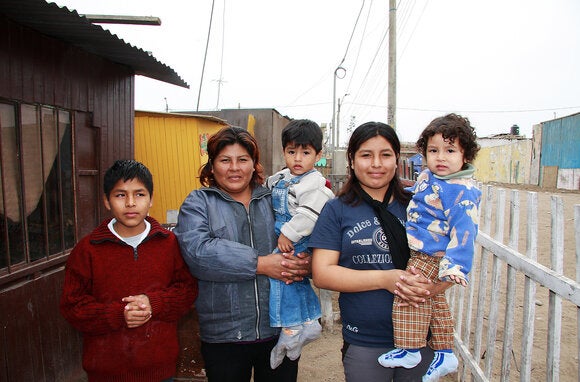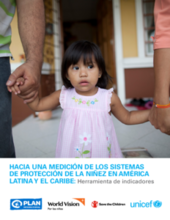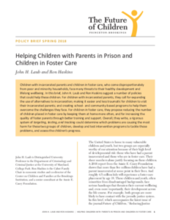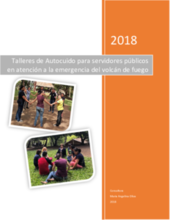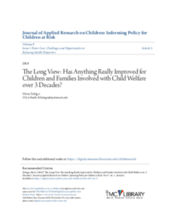This page contains documents and other resources related to children's care in the Americas. Browse resources by region, country, or category.
Displaying 1981 - 1990 of 3116
Se ha desarrollado la presente herramienta de indicadores a fines de poder contar con un instrumento de medición y evaluación del nivel de progreso alcanzado en cada país respecto de los sistemas nacionales de protección de la niñez.
In this brief, John H. Laub and Ron Haskins suggest a number of policies that could help children with incarcerated parents and children in foster care.
This video from Rise Magazine features tips from parents who have had their children placed in foster care in the U.S. to other parents in the same situation on how to handle visits with their children in the care system.
This video from Rise Magazine is designed to include in training for caseworkers, visit coaches, parent advocates and other frontline staff who will supervise or support parents during visits with children in foster care.
Este informe se detalla la propuesta metodológica para otorgar espacios seguros para que los servidores públicos que han atendido a los damnificados por una tragedia en Guatemala puedan descargarse emocionalmente y poner en práctica técnicas de autocuido.
This pilot study reports the baseline data of a prospective longitudinal study examining the educational achievements of grandchildren being raised by grandparents in parent absent homes.
This online course on implicit bias was developed by the Center for the Study of Social Policy (CSSP) and the Kirwan Institute for the Study of Race & Ethnicity to aid practitioners in understanding and addressing racial bias in the US child protection system.
This information sheet outlines provincial adoption provisions for Indigenous children.
This publication outlines five clear steps that child welfare agency leaders in the United States can take to build and maintain a strong, stable frontline workforce.
This paper reflects on: what’s better or not after 30 years; whether legislation and financing are aligned with child welfare’s goals of safety, permanency and well-being; and what remains to be done to improve the outcomes of children and youth in foster care or otherwise involved with child welfare.

